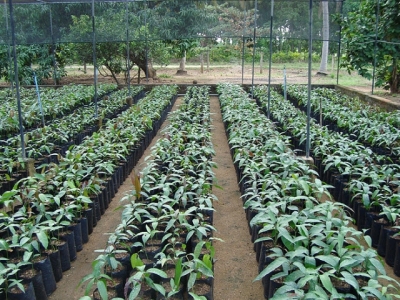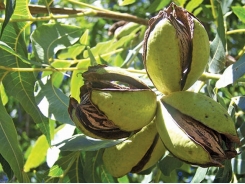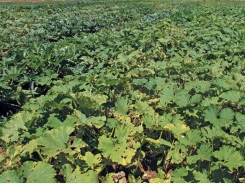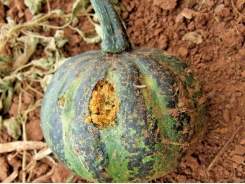Guidelines on buying good-quality nursery trees

The establishment of a new orchard is one of the largest capital investments a fruit farmer can make. Prof Karen Theron from the Department of Horticultural Science at Stellenbosch University provides insights and advice into purchasing healthy nursery material.
Establishing an orchard today costs between R200 000/ha and R400 000/ha depending on the trellis system, fruit type and cultivar. With an expense like this, and the time it takes before the first harvest, no farmer can afford to compromise on tree quality.
While good trees will not necessarily ensure excellent yield, poor trees will certainly cause problems. Orchards will take longer to reach their full production potential, if they do so at all, and this will hit profits.
So, how do you know whether you are buying good quality plant material? To begin with, you should purchase only certified plant material. This helps to guarantee that it complies with minimum prescribed industry standards and is free from certain diseases, according to Prof Karen Theron, pre-harvest researcher at the Department of Horticultural Science at Stellenbosch University. In addition, you should evaluate trees based on the following attributes:
- Shoot-to-root ratio;
- Root quality and quantity;
- Tree size;
- Bud quality.
Shoot-to- root ratio
This ratio should be well-balanced. In short, activities below ground should almost mirror activities above ground.“Roots produce important hormones, such as cytokinins, which stimulate bud break and growth,” explains Theron. “With a weak root system, buds may break in spring but not continue growing. An underdeveloped root system is often the cause of fruit trees not developing strongly in spring.”
In addition, roots play an important role in the uptake of water and nutrients and help to reduce plant stress and disease susceptibility. Unfortunately, most nursery practices are not geared to produce a well-balanced tree, because cultivation practices are primarily aimed at producing large trees, according to Theron.
Trees are usually produced with very close row spacing, resulting in small root systems. They are also supplied with large quanties of nutrients to chase shoot growth, and usually lose roots during lifting, especially when removed from heavy soils.
Root quality and quantity
It is generally best to have a well-developed root network with many branches and many fine roots in between, explains Theron. This will help the tree regenerate new roots faster after transplanting, and improve its water and nutrient absorption capacity.
The Plant Improvement Scheme requires nursery trees to have only two roots to be certified. This standard should be re-evaluated, argues Theron, especially for some of the newer stone fruit rootstocks, which are more difficult to root in the nursery.
Poor root development may be due to the manner in which trees are propagated. “Most nurseries have been using the same propagation techniques for years. These aren’t necessarily suited to the new-generation rootstocks,” she says.
Tree size
The general perception is that bigger is better. While this is the case with most fruit types and cultivars, there should be a balance between roots and shoots, Theron emphasises. “I would rather buy a smaller tree with a more balanced ratio than a bigger tree with an imbalance in root-to-shoot ratio,” she says.
Bud quality
For optimal growth in spring, it’s important to ensure that a tree has been well looked after, especially during the paradormancy phase, which occurs after shoot growth cessation in autumn.
“During paradormancy, trees need to be exposed to sufficient light and mild temperatures for at least six to seven weeks in order to form good quality terminal and lateral buds. Root systems are also further developed during this stage, while reserves, especially nitrogen and carbohydrates, are built up before entrance into endodormancy,” she explains.
Theron emphasises the value of urea applications after paradormancy, referring to research conducted at Cornell University in New York. Scientists found that applying two urea applications during paradormancy resulted in trees having a higher nitrogen reserve status.
These trees grew much better after transplantation into the orchard the following spring than those that did not receive the applications. Reserve build-up during paradormancy contributed to almost 99% of growth in spring, Theron explains.
Endodormancy, on the other hand, is important for bud synchronisation. To break endodormancy, trees must be exposed to low temperatures. In nurseries, trees are not always given enough chilling time, and can therefore be placed in cold stores after lifting and before establishment in the orchard. If this is done, the trees should be managed very carefully to prevent drying out, Theron warns.
Other factors
Look for trees that are uniform; they should be the same size and true to type, stresses Theron. They should also be healthy.
The minimum requirement for a tree to be certified under the Plant Protection Act is that it should look healthy and be free from certain viral diseases. Not all bacterial and fungal diseases are covered under the scheme, which aims to ensure that all materials comply with this act.
“This is especially a problem with stem cankers. Young trees should not have this disease,” she says.
According to Theron, SA nursery standards need to be re-evaluated and local nurseries benchmarked against international nurseries to identify ways of improving services.
“There are always some people complaining about nursery material quality. This doesn’t mean that there definitely is something wrong with our nursery material or system, but it won’t do any harm to see if there are ways to guarantee better quality planting material.”
Related news
Tools

Phối trộn thức ăn chăn nuôi

Pha dung dịch thủy canh

Định mức cho tôm ăn

Phối trộn phân bón NPK

Xác định tỷ lệ tôm sống

Chuyển đổi đơn vị phân bón

Xác định công suất sục khí

Chuyển đổi đơn vị tôm

Tính diện tích nhà kính

Tính thể tích ao




 When to water your plants
When to water your plants  Strategies for pumpkin fly control
Strategies for pumpkin fly control